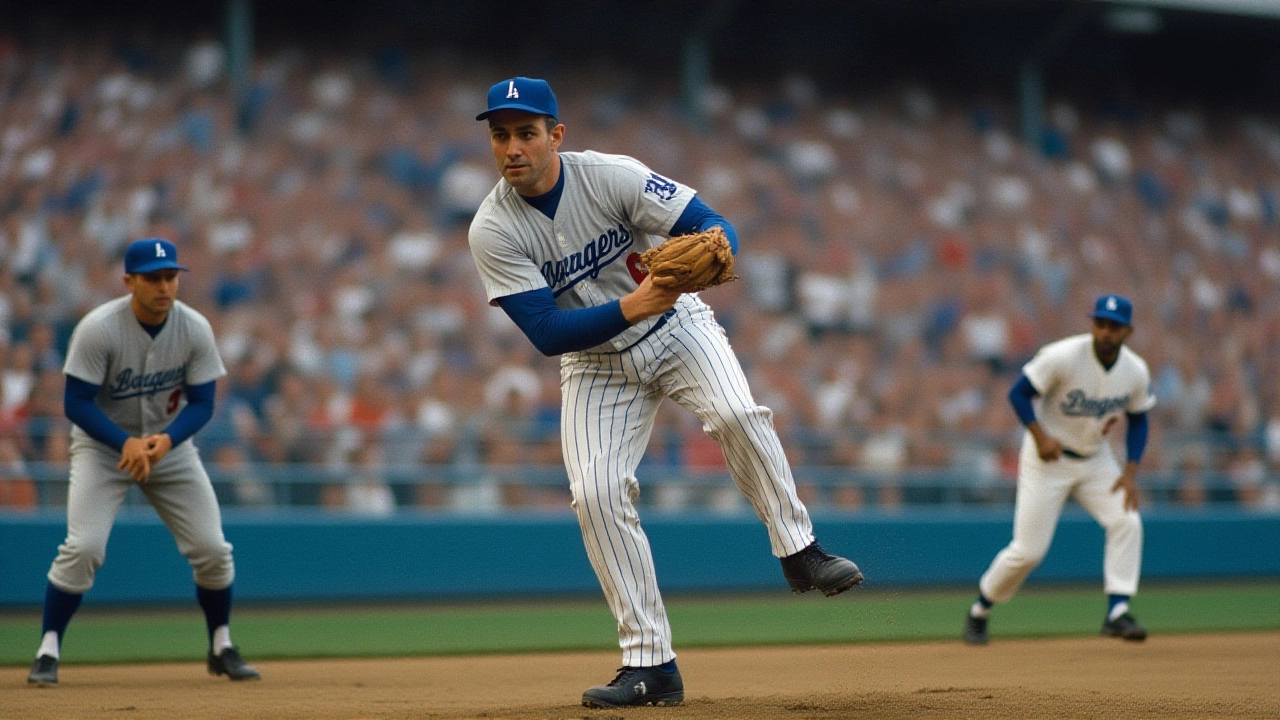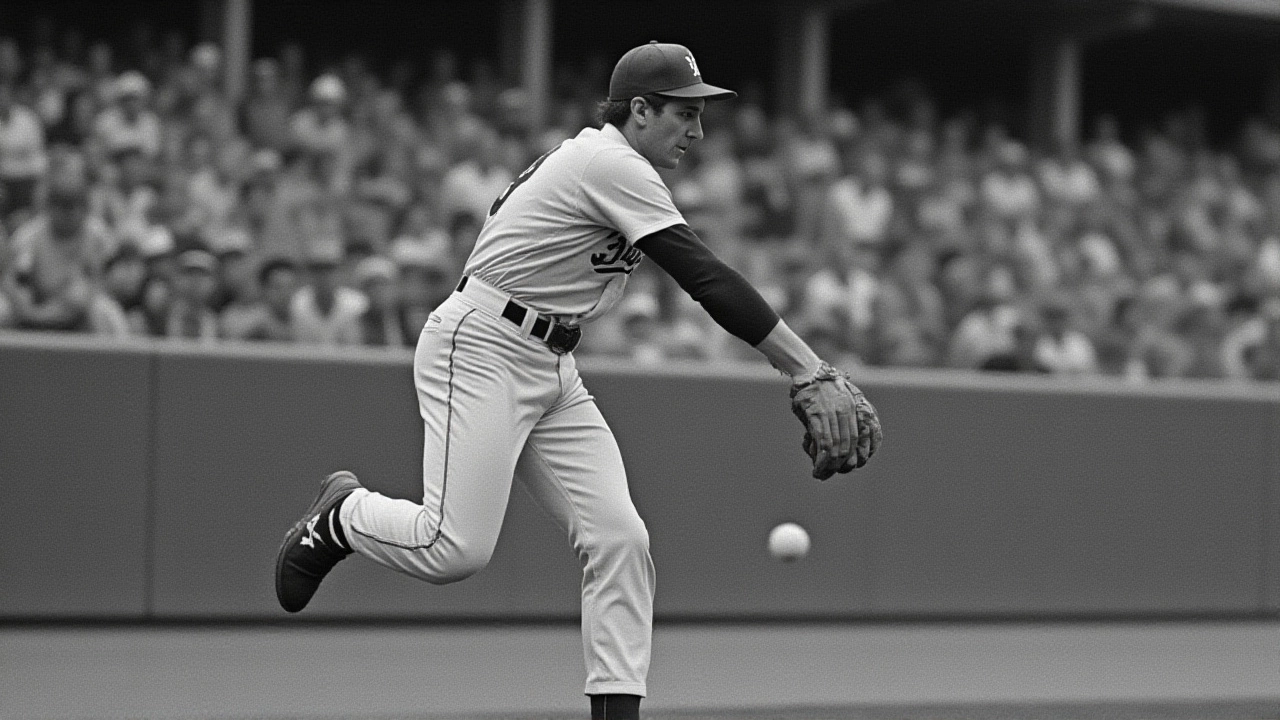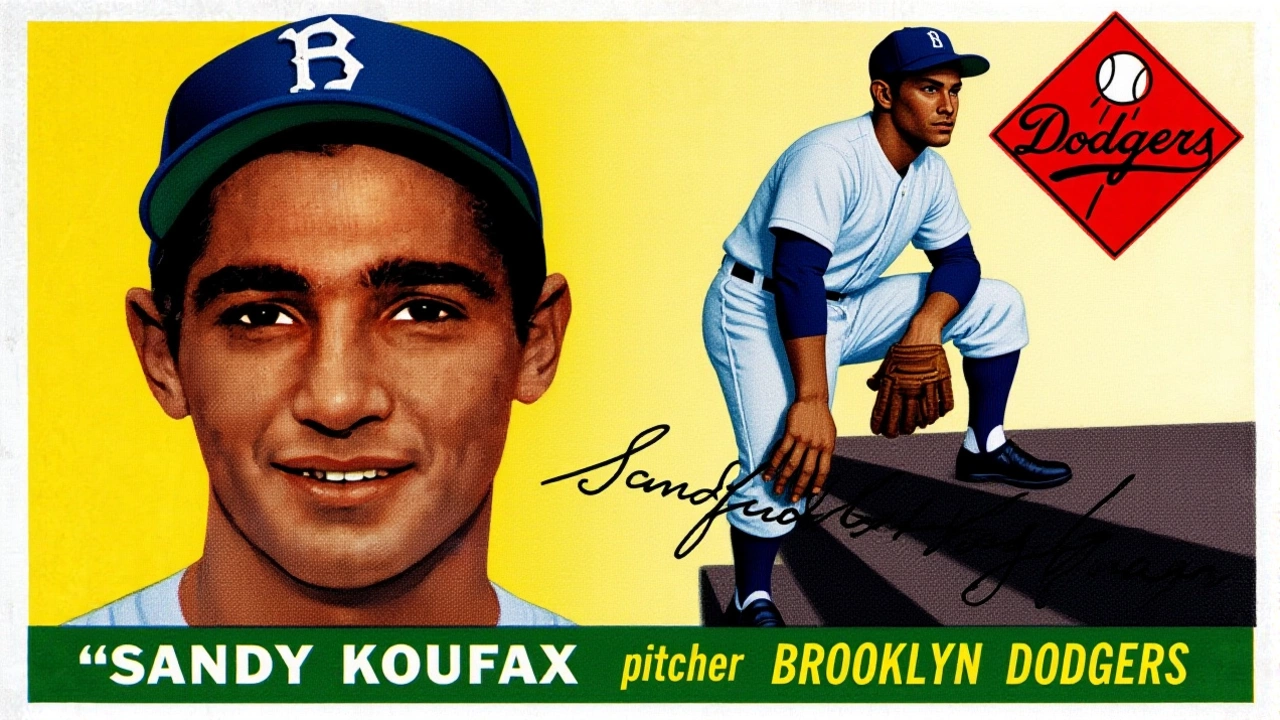On June 24, 1955, a 19-year-old left-hander from Brooklyn stepped onto the mound at Ebbets Field with the Dodgers already down 7-1. Sanford Koufax, the team’s $20,000 bonus baby, had waited months for this moment — not because he was unready, but because injuries had kept him sidelined. His debut wasn’t glamorous. It wasn’t even close to a win. But it was the first step in one of baseball’s most improbable journeys — from wild, struggling rookie to the greatest left-handed pitcher in history.
The Long Road to the Mound
Koufax’s path to the majors was anything but smooth. After signing with the Brooklyn Dodgers in March 1955, he missed most of spring training with a sore back. Then came the ankle disaster: on April 17, during pregame drills at Forbes Field in Pittsburgh, he twisted his right ankle chasing a fly ball. X-rays showed no break, but the damage was real. Eleven days later, he sprained his left ankle at Ebbets Field. By May 12, he was on the disabled list — a rare move for a teenager, even one with a big bonus. The Dodgers made room for him by sending Tommy Lasorda, then a 28-year-old pitching prospect, to Montreal. Lasorda would later joke, "It took the greatest left-handed pitcher in baseball history to get me off that Brooklyn club. I still think they made a mistake."A Mop-Up Debut, Not a Moment of Glory
Manager Walter Alston didn’t throw Koufax into the fire. He waited until the fifth inning, with the Dodgers trailing 7-1 against the Milwaukee Braves. The game was already lost. But Koufax’s first batter? Johnny Logan. A single. Then a walk. Then an error — his own. Bases loaded. Two outs. The crowd held its breath. Up stepped Henry Louis Aaron, the 21-year-old phenom who’d hit .280 with 13 homers that season. Koufax walked him. "Probably the smartest thing I did all year," Koufax later admitted. Then came Bobby Thomson — the man who hit the "Shot Heard ‘Round the World" in 1951. Koufax blew a 3-2 fastball past him. Strikeout. First major league out. The crowd didn’t cheer. But Alston nodded.
The Pattern That Almost Broke Him
That strikeout became a trap. For the next five years, Koufax chased perfection by throwing harder, faster, wilder. He led the league in walks four straight seasons. He once walked 13 batters in a single game. He’d strike out 15 — then give up seven runs. "Getting my first out by striking out a big hitter," he wrote years later, "became my pattern... trying to get out of trouble by throwing harder and harder and harder." He wished, he said, he’d walked Aaron instead. "I’m usually backing up third as I am wishing it."From Rookie Flop to Pitching Legend
Koufax didn’t start his first game until July 6, 1955 — two weeks after his debut. He threw 4⅔ innings, allowed one run, but walked eight. He didn’t pitch in the 1955 World Series, even as the Dodgers beat the Yankees to end their 67-year title drought. But the seeds were there. By 1962, he was an All-Star. By 1963, he won the Cy Young and MVP. In 1965, he pitched three complete-game shutouts in the World Series, including a historic Game 7 on Yom Kippur — a decision that stunned the nation and cemented his legacy.Over 12 seasons, Koufax posted a 165-87 record with a 2.76 ERA and 2,396 strikeouts in just 2,324.1 innings. His WHIP? A jaw-dropping 1.11. He struck out more batters per nine innings than anyone in history at the time. And yet, he retired at 30 — his arm gone, his body broken — after the 1966 season. No one had ever walked away so young, so dominant.

Why This Debut Still Matters
Koufax’s first outing wasn’t a triumph. It was a mess. But it was honest. It showed the raw, unpolished talent beneath the legend. It revealed the tension between control and power — the same tension that defined his career. He didn’t become great because he was perfect from day one. He became great because he kept fighting through his own mistakes. And that’s the real lesson: greatness isn’t born in the spotlight. It’s forged in the quiet, frustrating, overlooked moments — like a 19-year-old with two sprained ankles, throwing a fastball past Bobby Thomson with the bases loaded, knowing nothing about what was coming next.Frequently Asked Questions
Why didn’t Sandy Koufax pitch in the 1955 World Series?
Despite being on the roster, Koufax was still too raw and inconsistent for manager Walter Alston to trust in high-leverage playoff games. He had only made seven appearances that season, with a 5.79 ERA and 31 walks in 31 innings. Alston relied on veterans like Don Drysdale and Johnny Podres, who delivered dominant performances in the Dodgers’ seven-game win over the Yankees.
How did Koufax’s injuries impact his early career?
The ankle sprains in April 1955 delayed his debut by nearly three months and limited his ability to build momentum. He returned on June 12 but wasn’t used in meaningful situations until late July. The repeated setbacks likely contributed to his early control issues, as he rushed to prove himself while still healing — a pattern that led to his high walk totals in his first five seasons.
What made Koufax’s 1963 World Series performance so legendary?
In the 1963 World Series, Koufax pitched two complete-game shutouts against the Yankees, striking out 23 batters in 18 innings. He allowed just 10 hits and walked only two. His Game 1 performance — a 5-0 win with 11 strikeouts — was so dominant that Yankees manager Ralph Houk reportedly told his team, "Don’t swing at anything. Just wait him out." It was the first time a pitcher had shut out the Yankees in a World Series game since 1927.
Why did Sandy Koufax retire so young?
Chronic arthritis in his left elbow, worsened by years of overuse and the strain of his violent delivery, made pitching unbearable. By 1966, he could barely lift his arm. He chose to retire at 30 rather than risk permanent damage. His decision shocked baseball — but his legacy was already sealed. He remains the youngest pitcher ever elected to the Hall of Fame.
Was Koufax the first Jewish pitcher to reach baseball’s highest level?
No, but he was the first Jewish pitcher to become a true icon. Earlier Jewish players like Hank Greenberg and Sandy Koufax’s Brooklyn teammate, pitcher Lew Burdette, had succeeded. But Koufax’s dominance, combined with his decision to sit out Game 1 of the 1965 World Series for Yom Kippur, made him a cultural symbol — not just for Jews, but for athletes balancing faith and profession.
How does Koufax’s debut compare to other legendary pitchers’ first games?
Unlike Bob Gibson (who struck out 10 in his debut) or Clayton Kershaw (who pitched 6 shutout innings), Koufax’s debut was a mess — two innings, three baserunners, one strikeout. But that’s what makes it remarkable. Most legends debut with promise. Koufax debuted with chaos — and still found a way to become the best. His journey reminds us that greatness doesn’t always start with a flourish. Sometimes, it starts with a walk… and a prayer.
